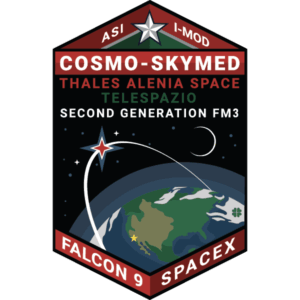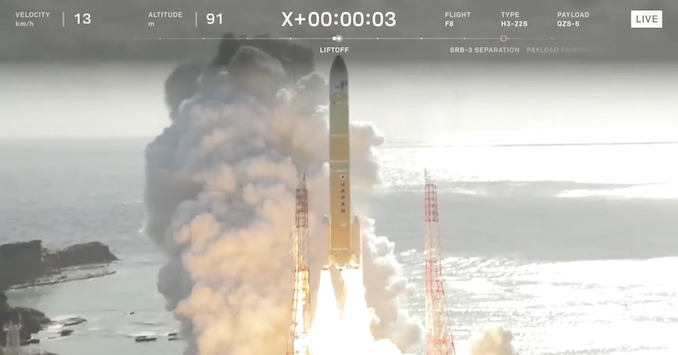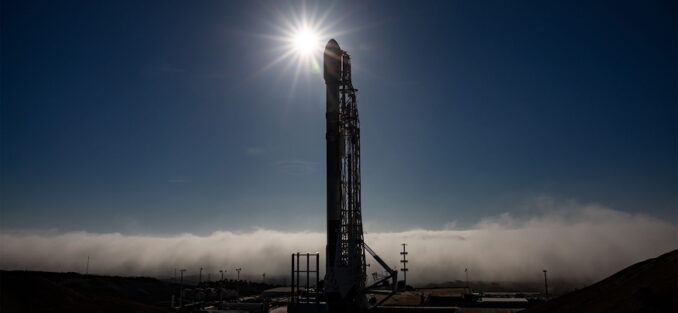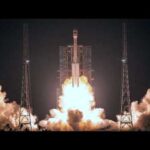Now Reading: SpaceX launches Space Force’s X-37B spaceplane to demo laser communications, quantum navigation
-
01
SpaceX launches Space Force’s X-37B spaceplane to demo laser communications, quantum navigation
SpaceX launches Space Force’s X-37B spaceplane to demo laser communications, quantum navigation
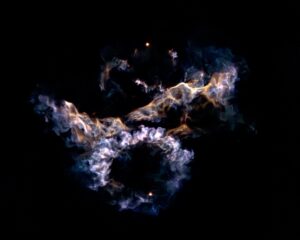
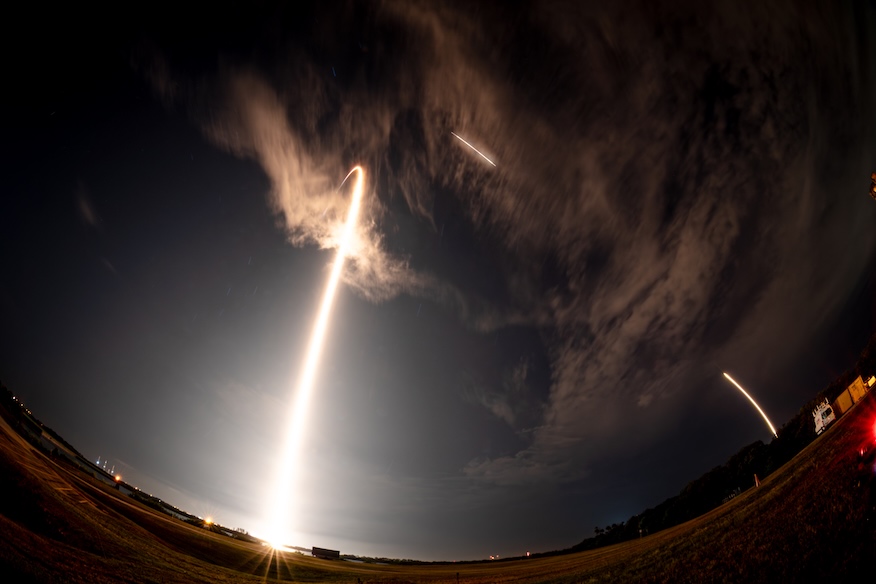
A SpaceX Falcon 9 rocket thundered off launch pad 39A at NASA’s Kennedy Space Center in Florida shortly before midnight, carrying with it a military spaceplane known as the X-37B Orbital Test Vehicle.
The launch Thursday night kicked off the eighth mission for the program, which began operational flights in April 2010. United States Space Force (USSF) officials confirmed separation of the Boeing-built spacecraft in the hours following liftoff at 11:50 p.m. EDT (0350 UTC on Aug. 22).
“OTV-8 exemplifies the X-37B’s status as the U.S. Space Force’s premier test platform for the critical space technologies of tomorrow,” said Air Force Rapid Capabilities Office (AFRCO) Acting Director William Blauser, in a prelaunch statement. “Through its mission-focused innovation, the X-37B continues to redefine the art of the possible in the final frontier of space.”
Roughly 8.5 minutes after liftoff, the SpaceX Falcon 9 booster, tail number 1092, completed its sixth flight with a touchdown at Landing Zone 2 at Cape Canaveral Space Force Station, accompanied by a sonic boom.
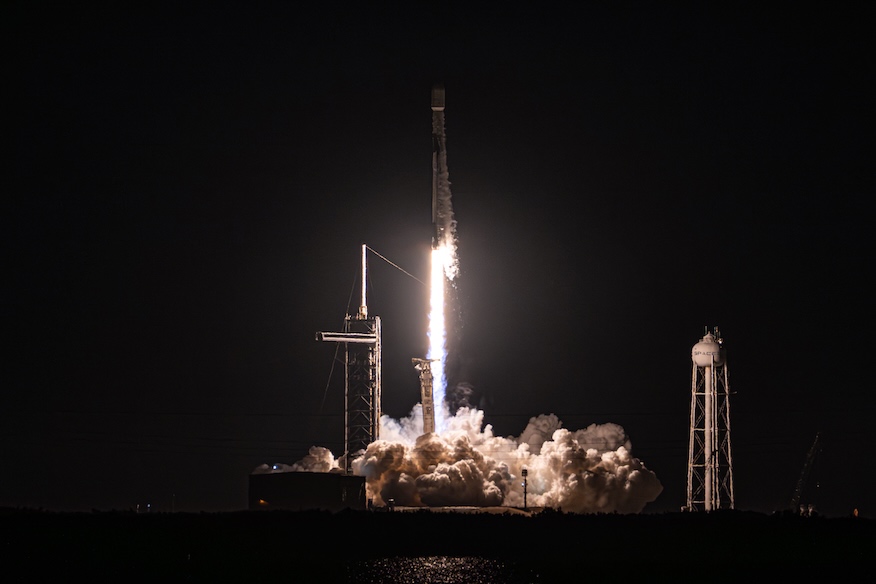
There are two operational spaceplanes in the X-37B fleet. The fourth flight of X-37B vehicle 1, also referred to by the mission names of OTV-8 or USSF-36, began about five-and-a-half months after X-37B vehicle 2 landed on Runway 12 at Vandenberg Space Force Base on March 7.
- X-37B 1
- OTV-1 April 22, 2010 – Dec. 3, 2010 (224 days)
- OTV-3 Dec. 11, 2012 – Oct. 17, 2014 (675 days)
- OTV-6 May 17, 2020 – Nov. 12, 2022 (909 days)
- X-37B 2
- OTV-2 March 5, 2011 – June 16, 2012 (469 days)
- OTV-4 May 20, 2015 – May 7, 2017 (718 days)
- OTV-5 Sep. 7, 2017 – Oct. 27, 2019 (780 days)

Much about the X-37B program remains secret, including the experiments conducted during most of its flights. However, Space Force officials made a point to emphasize two demonstrations on this flight: laser communication and quantum navigation.
The high-bandwidth inter-satellite laser communications technology onboard the OTV-8 flight will interact with what the USSF describes as “proliferated commercial satellite networks in Low Earth Orbit.” It’s unclear though if this demonstration will involve the SpaceX-built Starshield satellites operated by the government, SpaceX’s Starlink satellites or another commercial satellite constellation.
The USSF said that communicating through shorter wavelength infrared light allows an increase in the amount of data that can be moved with each transmission and do so in a more secure manner as compared to radio frequency communications.
“OTV-8’s laser communications demonstration will mark an important step in the U.S. Space Force’s ability to leverage proliferated space networks as part of a diversified and redundant space architectures,” said Gen. Chance Saltzman, Chief of Space Operations, said. “In so doing, it will strengthen the resilience, reliability, adaptability and data transport speeds of our satellite communications architecture.”
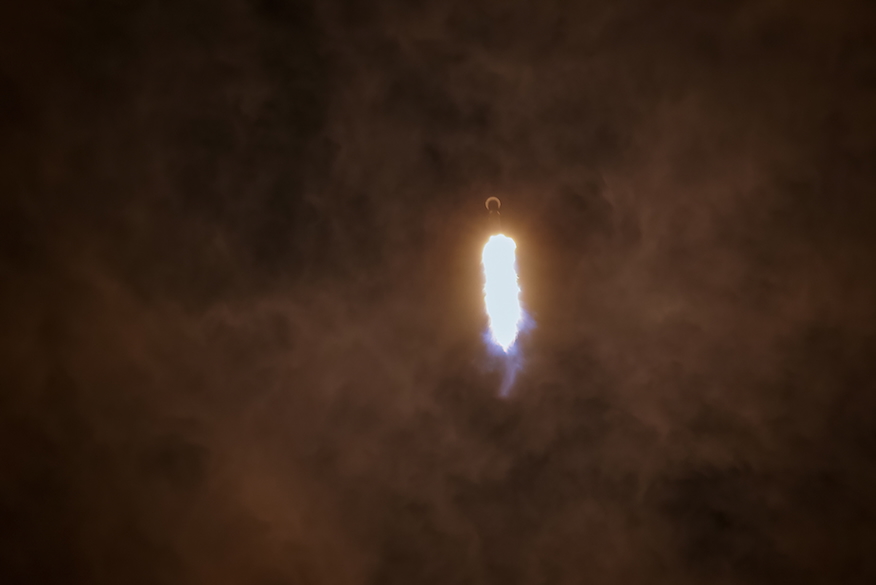
The X-37B will also demonstrate the use of a quantum inertial sensor that will observe the rotation and acceleration of atoms, allowing for unaided navigation. The USSF aims to learn more about navigation in areas where GPS is either compromised or unavailable.
Officials said this would be helpful for both U.S. spacecraft in Earth orbit as well as out in cislunar space and beyond.
“OTV 8’s quantum inertial sensor demonstration is a welcome step forward for operational resilience in space,” said Col. Ramsey Horn, Space Delta 9 commander. “Whether navigating beyond Earth based orbits in cislunar space or operating in GPS-denied environments, quantum inertial sensing allows for robust navigation capabilities when GPS navigation is not possible.”
It’s unclear how long the X-37B will operate in low Earth orbit this time.

Stay Informed With the Latest & Most Important News
Previous Post
Next Post
-
 01From Polymerization-Enabled Folding and Assembly to Chemical Evolution: Key Processes for Emergence of Functional Polymers in the Origin of Life
01From Polymerization-Enabled Folding and Assembly to Chemical Evolution: Key Processes for Emergence of Functional Polymers in the Origin of Life -
 02Panasonic Leica Summilux DG 15mm f/1.7 ASPH review
02Panasonic Leica Summilux DG 15mm f/1.7 ASPH review -
 03Two Black Holes Observed Circling Each Other for the First Time
03Two Black Holes Observed Circling Each Other for the First Time -
 04How New NASA, India Earth Satellite NISAR Will See Earth
04How New NASA, India Earth Satellite NISAR Will See Earth -
 05And Thus Begins A New Year For Life On Earth
05And Thus Begins A New Year For Life On Earth -
 06Astronomy Activation Ambassadors: A New Era
06Astronomy Activation Ambassadors: A New Era -
07SpaceX launch surge helps set new global launch record in 2024












